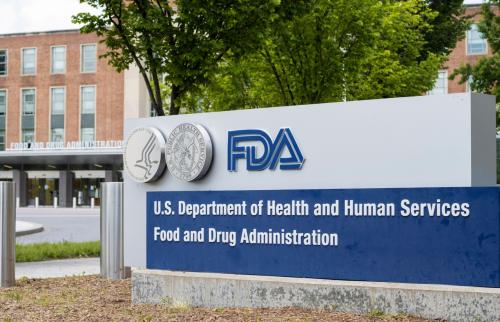It has been hailed as the most significant discovery in biology since polymerase chain reaction allowed for the mass replication of DNA samples. CRISPR-Cas9 is an inexpensive and easy-to-use gene-editing method that promises applications ranging from medicine to industrial agriculture to biofuels. Currently, applications to treat leukemia, HIV, and cancer are under experimental development.1 However, new technical solutions tend to be fraught with old problems, and in this case, ethical and legal questions loom large over the future.
Disagreements on ethics
The uptake of this method has been so fast that many scientists have started to worry about inadequate regulation of research and its unanticipated consequences.2 Consider, for instance, the disagreement on research on human germ cells (eggs, sperm, or embryos) where an edited gene is passed onto offspring. Since the emergence of bioengineering applications in the 1970s, the scientific community has eschewed experiments to alter human germline and some governments have even banned them.3 The regulation regimes are expectedly not uniform: for instance, China bans the implantation of genetically modified embryos in women but not the research with embryos.
Last year, a group of Chinese researchers conducted gene-editing experiments on non-viable human zygotes (fertilized eggs) using CRISPR.4 News that these experiments were underway prompted a group of leading U.S. geneticists to meet in March 2015 in Napa, California, to begin a serious consideration of ethical and legal dimensions of CRISPR and called for a moratorium on research editing genes in human germline.5 Disregarding that call, the Chinese researchers published their results later in the year largely reporting a failure to precisely edit targeted genes without accidentally editing non-targets. CRISPR is not yet sufficiently precise.
CRISPR reignited an old debate on human germline research that is one of the central motivations (but surely not the only one) for an international summit on gene editing hosted by the U.S. National Academies of Sciences, the Chinese Academy of Sciences, and the U.K.’s Royal Society in December 2015. About 500 scientists as well as experts in the legal and ethical aspects of bioengineering attended.6 Rather than consensus, the meeting highlighted the significant contrasts among participants about the ethics of inquiry, and more generally, about the governance of science. Illustrative of these contrasts are the views of prominent geneticists Francis Collins, Director of the National Institutes of Health, and George Church, professor of genetics at Harvard. Collins argues that the “balance of the debate leans overwhelmingly against human germline engineering.” In turn, Church, while a signatory of the moratorium called by the Napa group, has nevertheless suggested reasons why CRISPR is shifting the balance in favor of lifting the ban on human germline experiments.7
The desire to speed up discovery of cures for heritable diseases is laudable. But tinkering with human germline is truly a human concern and cannot be presumed to be the exclusive jurisdictions of scientists, clinicians, or patients. All members of society have a stake in the evolution of CRISPR and must be part of the conversation about what kind of research should be permitted, what should be discouraged, and what disallowed. To relegate lay citizens to react to CRISPR applications—i.e. to vote with their wallets once applications hit the market—is to reduce their citizenship to consumer rights, and public participation to purchasing power.8 Yet, neither the NAS summit nor the earlier Napa meeting sought to solicit the perspectives of citizens, groups, and associations other than those already tuned in the CRISPR debates.9
The scientific community has a bond to the larger society in which it operates that in its most basic form is the bond of the scientist to her national community, is the notion that the scientist is a citizen of society before she is a denizen of science. This bond entails liberties and responsibilities that transcend the ethos and telos of science and, consequently, subordinates science to the social compact. It is worth recalling this old lesson from the history of science as we continue the public debate on gene editing. Scientists are free to hold specific moral views and prescriptions about the proper conduct of research and the ethical limits of that conduct, but they are not free to exclude the rest of society from weighing in on the debate with their own values and moral imaginations about what should be permitted and what should be banned in research. The governance of CRISPR is a question of collective choice that must be answered by means of democratic deliberation and, when irreconcilable differences arise, by the due process of democratic institutions.
Patent disputes
More heated than the ethical debate is the legal battle for key CRISPR patents that has embroiled prominent scientists involved in perfecting this method. The U.S. Patent and Trademark Office initiated a formal contestation process, called interference, in March 2016 to adjudicate the dispute. The process is likely to take years and appeals are expected to extend further in time. Challenges are also expected to patents filed internationally, including those filed with the European Patent Office.
To put this dispute in perspective, it is instructive to consider the history of CRISPR authored by one of the celebrities in gene science, Eric Lander.10 This article ignited a controversy because it understated the role of one of the parties to the patent dispute (Jennifer Doudna and Emmanuelle Charpentier), while casting the other party as truly culminating the development of this technology (Feng Zhang, who is affiliated to Lander’s Broad Institute). Some gene scientists accused Lander of tendentious inaccuracies and of trying to spin a story in a manner that favors the legal argument (and economic interest) of Zhang.
Ironically, the contentious article could be read as an argument against any particular claim to the CRISPR patents as it implicitly questions the fairness of granting exclusive rights to an invention. Lander tells the genesis of CRISPR that extends through a period of two decades and over various countries, where the protagonists are the many researchers who contributed to the cumulative knowledge in the ongoing development of the method. The very title of Lander’s piece, “The Heroes of CRISPR” highlights that the technology has not one but a plurality of authors.
A patent is a legal instrument that recognizes certain rights of the patent holder (individual, group, or organization) and at the same time denies those rights to everyone else, including those other contributors to the invention. Patent rights are thus arbitrary under the candle of history. I am not suggesting that the bureaucratic rules to grant a patent or to determine its validity are arbitrary; they have logical rationales anchored in practice and precedent. I am suggesting that in principle any exclusive assignation of rights that does not include the entire community responsible for the invention is arbitrary and thus unfair. The history of CRISPR highlights this old lesson from the history of technology: an invention does not belong to its patent holder, except in a court of law.
Some scientists may be willing to accept with resignation the unfair distribution of recognition granted by patents (or prizes like the Nobel) and find consolation in the fact that their contribution to science has real effects on people’s lives as it materializes in things like new therapies and drugs. Yet patents are also instrumental in distributing those real effects quite unevenly. Patents create monopolies that, selling their innovation at high prices, benefit only those who can afford them. The regular refrain to this charge is that without the promise of high profits, there would be no investments in innovation and no advances in life-saving medicine. What’s more, the biotech industry reminds us that start-ups will secure capital injections only if they have exclusive rights to the technologies they are developing. Yet, Editas Medicine, a biotech start-up that seeks to exploit commercial applications of CRISPR (Zhang is a stakeholder), was able to raise $94 million in its February 2016 initial public offering. That some of Editas’ key patents are disputed and were entering interference at USPTO was patently not a deterrent for those investors.
Towards a CRISPR democratic debate
Neither the governance of gene-editing research nor the management of CRISPR patents should be the exclusive responsibility of scientists. Yet, they do enjoy an advantage in public deliberations on gene editing that is derived from their technical competence and from the authority ascribed to them by society. They can use this advantage to close the public debate and monopolize its terms, or they could turn it into stewardship of a truly democratic debate about CRISPR.
The latter choice can benefit from three steps. A first step would be openness: a public willingness to consider and internalize public values that are not easily reconciled with research values. A second step would be self-restraint: publicly affirming a self-imposed ban on research with human germline and discouraging research practices that are contrary to received norms of prudence. A third useful step would be a public service orientation in the use of patents: scientists should pressure their universities, who hold title to their inventions, to preserve some degree of influence over research commercialization so that the dissemination and access to innovations is consonant with the noble aspirations of science and the public service mission of the university. Openness, self-restraint, and an orientation to service from scientists will go a long way to make of CRISPR a true servant of society and an instrument of democracy.
Other reading: See media coverage compiled by the National Academies of Sciences.
1Nature: an authoritative and accessible primer. A more technical description of applications in Hsu, P. D. et al. 2014. Cell, 157(6): 1262–1278.
2For instance, see this reflection in Science, and this in Nature.
3More about ethical concerns on gene editing here: http://www.geneticsandsociety.org/article.php?id=8711
4Liang, P. et al. 2015. Protein & Cell, 6, 363–372
5Science: A prudent path forward for genomic engineering and germline gene modification.
6Nature: NAS Gene Editing Summit.
7While Collins and Church participated in the summit, their views quoted here are from StatNews.com: A debate: Should we edit the human germline. See also Sciencenews.org: Editing human germline cells sparks ethics debate.
8Hurlbut, J. B. 2015. Limits of Responsibility, Hastings Center Report, 45(5): 11-14.
9This point is forcefully made by Sheila Jasanoff and colleagues: CRISPR Democracy, 2015 Issues in S&T, 22(1).
10Lander, E. 2016. The Heroes of CRISPR. Cell, 164(1-2): 18-28.
The Brookings Institution is committed to quality, independence, and impact.
We are supported by a diverse array of funders. In line with our values and policies, each Brookings publication represents the sole views of its author(s).



Commentary
Gene editing: New challenges, old lessons
March 15, 2016